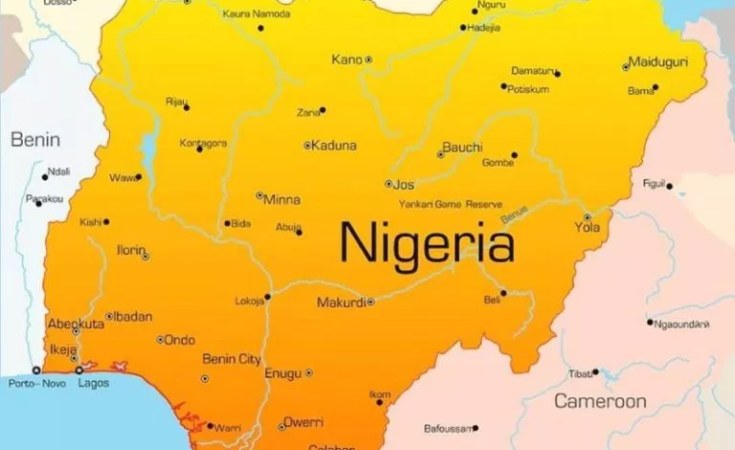Nigeria: As the U.S. Withdraws Funding, Professor Pate Steps in – What’s Next?

“Africa, we really need to change our mindset. Access to aid, we can begin to think of is a thing of the past. We have to focus on two things: attracting investment & mobilising our own domestic resources” — Ngozi Okonjo-Iweala, Director General World Trade Organisation
Recent shifts in the public health landscape have led to significant upheaval in the last three months, spurred on by what can only be described as abrupt policy shifts in the United States of America (USA) and European Union (EU) countries. The new leadership in the USA and the changing domestic priorities across many EU countries have triggered a rapid shift from development support to other pressing internal issues and domestic priorities. This transition has unfolded at an unprecedented pace, leaving many countries unprepared for the collateral damage that will result.
What is evident as this realignment unfolds is that we do not yet fully understand the extent of its consequences. While the implications of these actions are still evolving, as are those for Nigeria, we reflect on some of the immediate priorities for the health of Nigerians.
Firstly, to provide context, there are two events, exactly two weeks apart, that will redefine the future of public health in Nigeria.
January 20, the White House issued an Executive Order for a 90-day pause and assessment of US foreign aid awards.
February 14, Nigerian lawmakers, following the rapid intervention of the Honourable Minister of Health and Social Welfare, Professor Muhammad Pate approved an additional $200 million to fill some of the gap created by the US Government’s suspension of foreign.
The speed of the response
Nigeria’s response to the evolving policy landscape in the USA has been one of the most rapid in the region. This quick action provided immediate relief to the approximately 1.7 million people in Nigeria on antiretrovirals for HIV, along with the essential drugs, commodities, and diagnostic reagents needed to manage HIV, TB, and malaria.
The speed of the announcement, and the detailed information provided by the Coordinating Minister of Health, has gained widespread praise from several African countries. Now that we have responded in the short term, the health sector needs to do some serious strategic thinking about what the future holds.
We must therefore consider these three areas.
1. What is the true scale of U.S funding for public health in Nigeria?
While data is hard to find on Nigerian government websites, the U.S. government reports that it spent approximately $600 million on health programmes in Nigeria in 2023, and in 2024 $464 million was disbursed to Nigeria for health programmes. This spending primarily supported health initiatives such as the President’s Emergency Plan for AIDS Relief (PEPFAR) and the President’s Malaria Initiative (PMI). However, the data is not sufficiently disaggregated and includes significant expenditures on the ongoing response to the COVID-19 pandemic, as well as vaccine-related costs.
A critical aspect of Nigeria’s healthcare financing is the reliance on out-of-pocket expenditure. According to new data from the World Health Organization (WHO), Nigerians have depended heavily on personal funds for their healthcare needs, with 76% of healthcare spending coming from out-of-pocket expenses and 13% sourced from public funding through government revenue. This reliance has further strengthened the impetus for increased domestic resource mobilisation by raising tax revenue through strategic tax reforms, thereby increasing potential funding for healthcare.
So, the question on everyone’s mind is: can we achieve with $200 million what the U.S. government did with between $400 — $600 million? The optimistic answer is yes,we should be able to. From a procurement of commodities perspective, we likely can. However, with the systems and organisations that once managed procurement, supply chains, payments, deliveries, allowances, and monitoring and evaluation now shut down, the bigger question is: who will cover these costs? And if no one steps in, can the commodities be delivered without these systems in place?
2. Can we build integrated systems to deliver public health programmes more efficiently?
There are inefficiencies in the vertical approaches that have been developed to deliver priority public health interventions such as HIV, TB, malaria, and Polio. On paper, it is clear that these vertically funded delivery mechanisms are not the most efficient way to provide health interventions. These fragmented, vertical health programmes in Nigeria led to inefficiencies by creating silos, which hindered a coordinated and effective response to the COVID-19 pandemic and other health priorities.
In February 2025, the Coordinating Minister of Health and Social Welfare initiated the AIDS, Tuberculosis, and Malaria (ATM) Technical Working Group (TWG). This is a positive step forward in integrating and coordinating these essential health programmes and aligning resources to combat AIDS, Tuberculosis, and Malaria.
However, the uncomfortable truth is that Nigeria’s primary healthcare system is also not widely recognised for its efficiency. As Nigeria, and many other African countries, consider integrating HIV, TB, and malaria into primary healthcare, the key question is: how ready are our systems to deliver this across our complex federal landscape? How can we mitigate the significant risks of losing the hard-fought gains of vertical delivery systems in the transition to primary healthcare?
During a recent webinar organised by Nigeria Health Watch and Willow Health Media titled “Re-imagining Health Financing in Africa,” Charlotte Muheki, Technical Director Primary Health Care, Amref Health Africa, outlined several examples of how African countries are responding to funding cuts.
Countries, like Rwanda, have already demonstrated the potential for sustainable financing by integrating HIV into broader primary healthcare, negotiating with donors to align funding with their national framework, and employing Community Health Workers to deliver essential services at the village level.
Can we sustain the financing?
Let us assume that the real cost of delivering priority public health interventions is indeed $200M per annum and that we do build the systems to deliver this efficiently. The next big question is whether we can find an additional $200 million for our health budget annually. If the Government of Nigeria is to achieve this, hard decisions may need to be made about where to source the funds from. Some countries, like Ethiopia, are already making these decisions, having just announced a new tax for all workers to fill the financial gap left by the USAID funding cuts.
Ghana introduced the National Health Insurance Levy (NHIL) in 2004, a 2.5% levy on goods and service in order to fund basic health services through mutual and private health insurance schemes. South Africa has implemented “sin taxes” on tobacco and alcohol, generating significant revenue for health and contributing to a reduction in smoking rates.
Despite these efforts, overseas development assistance (ODA) distorted health financing perceptions. Ministries of Finance may have believed the sector was adequately funded due to ODA, making it difficult to achieve the Abuja Declaration’s goal of spending 15% of GDP on health, and health not receivingg the prioritisation it. Only now, with greater transparency and an increasingly clearer view of the health funding gap, Nigeria should be better able to assess the true cost of funding essential health programmes. Health is a political choice.
In view of these factors, how will Nigeria sustain the response?
We live in interesting times. If we had the luxury of time, the Minister’s priority programmes would be a perfect anecdote for the new world order. Focusing on a Sector-wide Approach (SWAp) to increase transparency and accountability in the health sector is a perfect way to reduce costs, eliminate duplication, and drive efficiency. The Presidential Initiative for Unlocking Healthcare Value Chain (PVAC) is an ideal instrument to boost domestic manufacturing of “pharmaceuticals, medical devices and healthcare technologies”. However, the big unknown is, will we have the time to make the necessary changes to save the day? The jury is out, but we can only hope that we do.
By Nigeria Health Watch.



